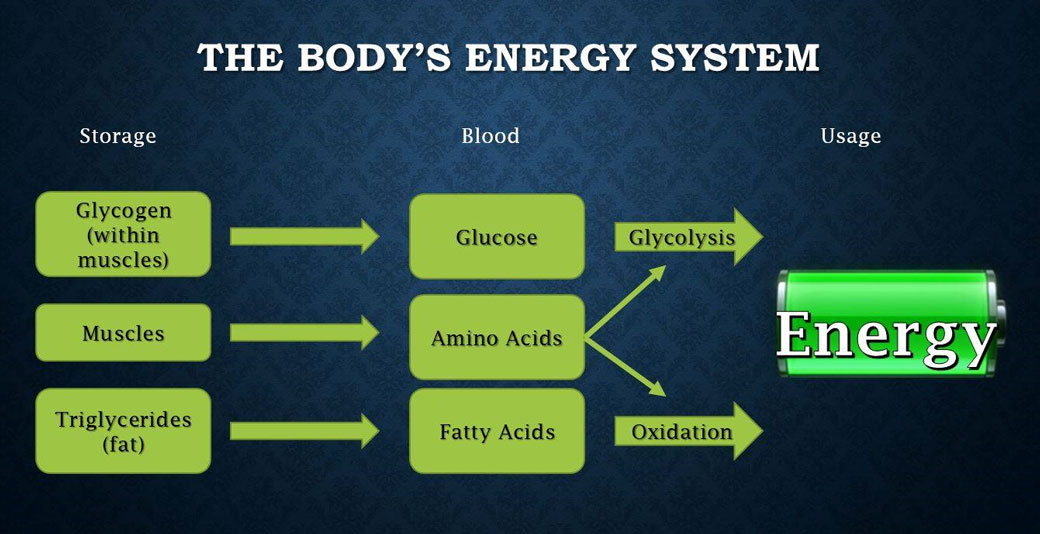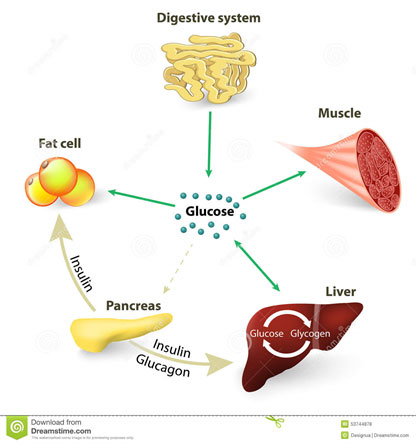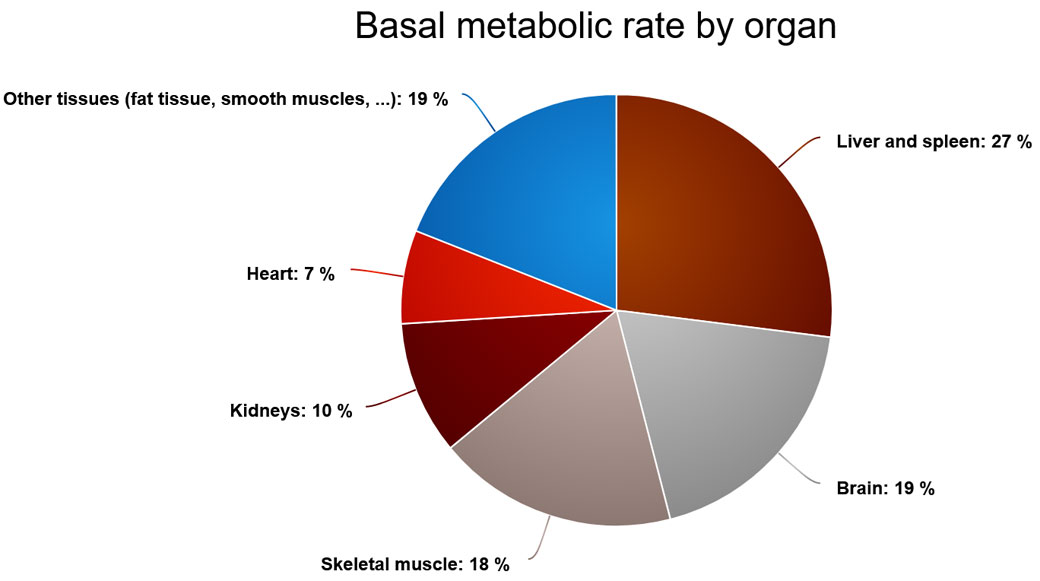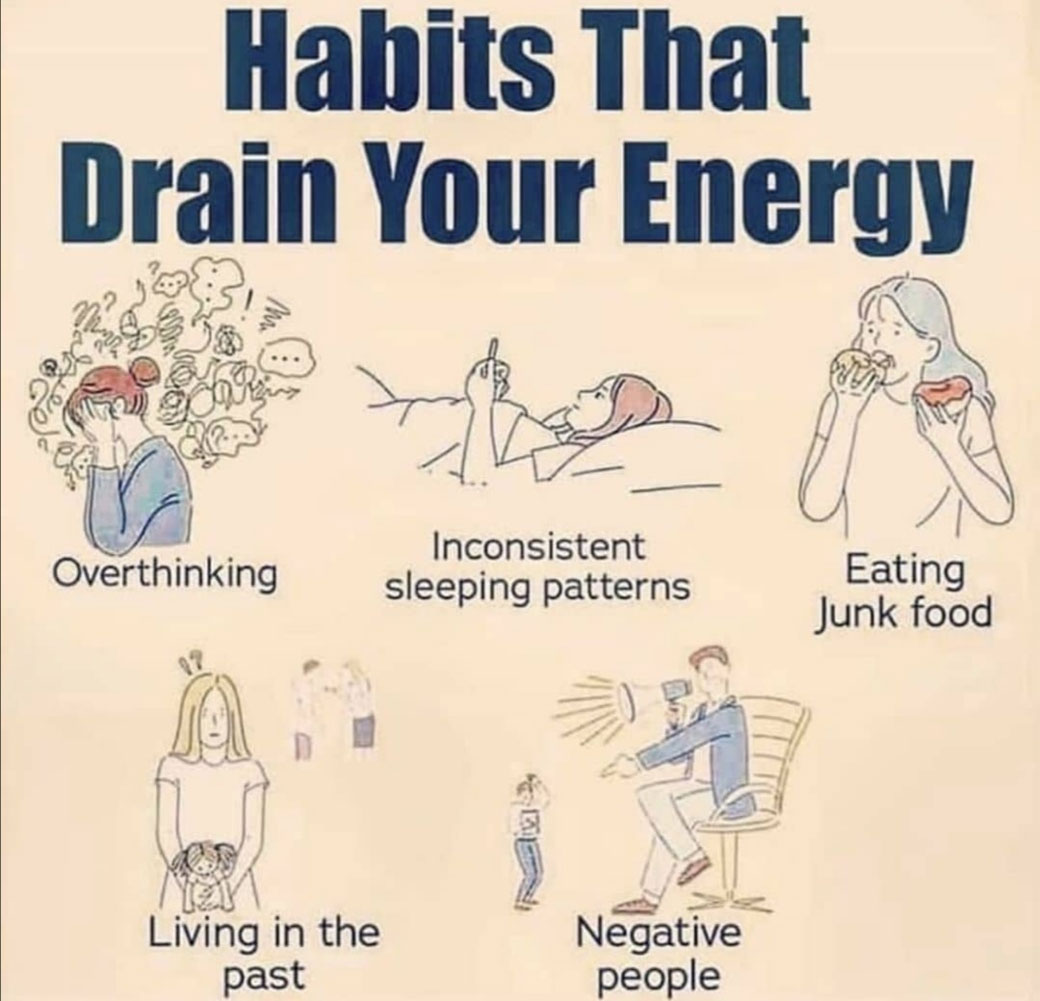Habits of Health Weekly Meeting
April
Balancing Energy use in the Body – Three key factors
The Body is the most exquisite Chemical Factory ever designed!
Sources of energy used by the body come from – Carbohydrates which convert to glucose, Fats that convert to fatty acids and protein that converts to amino acids.
To complete the energy picture, oxygen is required to combine with those molecules, for energy to be produced.
Krebs cycle
the sequence of reactions by which most living cells generate energy during the process of aerobic respiration. It takes place in the mitochondria, consuming oxygen, producing carbon dioxide and water as waste products, and converting ADP to energy-rich ATP.

The sugars and starches we consume are considered carbohydrates. A simple carb like table sugar is readily broken down into glucose, the body's principal energy source. Glucose in the blood stream can be used immediately as fuel or can be sent to the liver and muscles and stored as glycogen.

Fat on the other hand contains more energy but is much harder for the body to use. Fat contains nine calories per gram. It is stored in the adipose layer and is much harder to access than is sugar that is in the blood stream.
- Digestion: Fat is slow to digest and is much harder to convert into a usable form of energy.
- Transportation: Getting the fatty acids to required areas after the body breaks it down takes additional time before it can be used as energy.
- Conversion: Utilizing the stored body fat into energy takes a great amount of oxygen, which is not available when doing high intensity exercise.
Protein is the third source but is not usually used as an energy source.
- When you consume proteins, during digestion, your body breaks down the protein into its component amino acids. Amino acids are important for the building of other proteins, synthesis of hormones the body uses and also as neurotransmitters. Amino acids are also extremely important building blocks for muscle tissue and repair. Amino acids are known to help you fight anxiety, depression, promote relaxation leading to better sleep.
For the average adult in a resting state, the brain consumes about 19 percent of the body's energy. The brain requires constant, consistent energy; therefore, it uses mainly glucose as its energy source. We need those carbs to provide that instant energy.
Skeletal muscle: 18% Kidneys: 10% Heart: 7% Other tissues (lungs, intestine, skin, bone, fat tissue, glands...): 19%

TEE (Total Energy Expenditure) – How much energy does the body require to maintain normal quality function? TEE is made up of (Basal Metabolic Rate) BMR which makes up 60 to 80 percent of TEE.
Diet-Induced Thermogenesis is coming from the energy expended to digest, absorb, and convert food. Generally, about ten percent of TEE.
Plus (Activity Energy Expenditure) made up from the calories we expend during physical activities. AEE typically runs about 15 to 20 percent of TEE, depending on your level of activity.
Of course, if we have been injured or dealing with an illness, those issues will require some additional energy. Many times, this can explain how easy it is to lose weight when we are sick.

Join us to discuss these topics!
For more information read our other articles or contact us today!
Michael McCright
Free Health Coaching – provided by the "Together i Can Group"
Together i Can Inc.
April 13, 2022
Call 619-316-6900
« Go to Current Events
« Go to Past Events
« Go to Articles